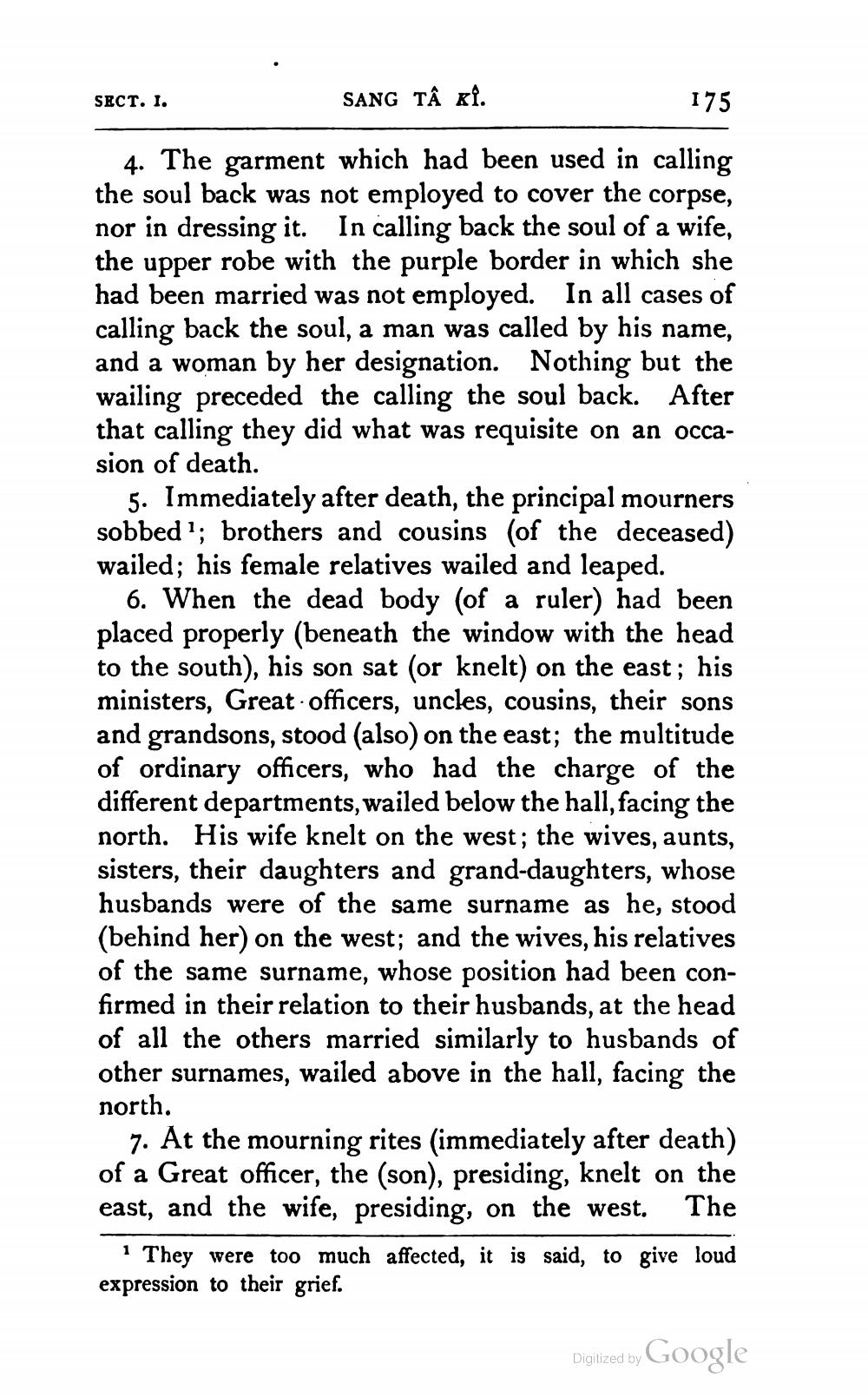________________
SECT. I.
SANG TÂ ki.
175
4. The garment which had been used in calling the soul back was not employed to cover the corpse, nor in dressing it. In calling back the soul of a wife, the upper robe with the purple border in which she had been married was not employed. In all cases of calling back the soul, a man was called by his name, and a woman by her designation. Nothing but the wailing preceded the calling the soul back. After that calling they did what was requisite on an occasion of death.
5. Immediately after death, the principal mourners sobbed 1; brothers and cousins (of the deceased) wailed; his female relatives wailed and leaped.
6. When the dead body (of a ruler) had been placed properly (beneath the window with the head to the south), his son sat (or knelt) on the east; his ministers, Great officers, uncles, cousins, their sons and grandsons, stood (also) on the east; the multitude of ordinary officers, who had the charge of the different departments, wailed below the hall, facing the north. His wife knelt on the west; the wives, aunts, sisters, their daughters and grand-daughters, whose husbands were of the same surname as he, stood (behind her) on the west; and the wives, his relatives of the same surname, whose position had been confirmed in their relation to their husbands, at the head of all the others married similarly to husbands of other surnames, wailed above in the hall, facing the north.
7. At the mourning rites (immediately after death) of a Great officer, the (son), presiding, knelt on the east, and the wife, presiding, on the west. The
1 They were too much affected, it is said, to give loud expression to their grief.
Digitized by Google




